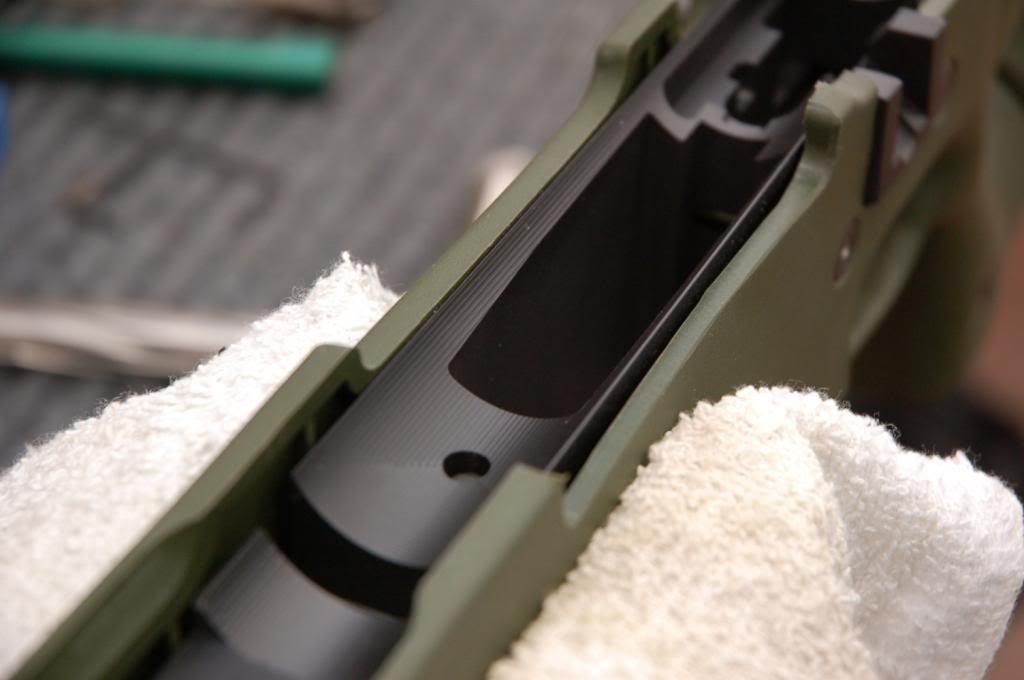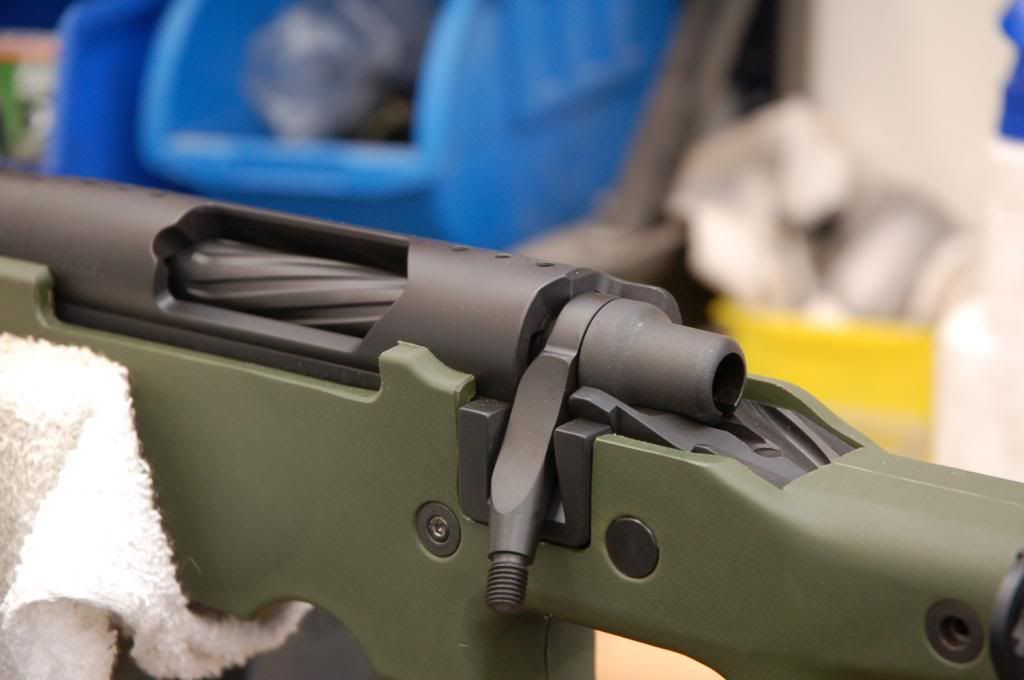I caught some static last fall with my alternative to bedding chassis stocks like the AICS and bedding block systems used in the H/S Precision and B/C stocks. Well, we went ahead and tried it out anyway on an AICS.
All I know is this: When I took a Stiller TAC30 out of the box and put it in the stock and tightened the rear action screw the receiver lifted over .250" off the front of the stock at the recoil lug well. This was measured in the mill with an indicator. After surfacing I did the same thing and got .004". I wasn't happy with that and learned that the trigger was hanging up by the front retaining pin. I made an addition to the program and it dropped to .0004".
From there it was gravy. Just clearance the lug, the bolt handle, and the safety lever for the Timney 511 that the customer wants to run. We've not shot it yet, but I'm very optimistic. Friday we were on a 19+ hour road trip to CO to pick up our new ceracoat curing oven. We stopped by the folks at Bighorn actions and I showed it to AJ the owner. "That's cool. . ."
If you know AJ and his machining/manufacturing background that kind of endorsement carries some weight. Least it does with me.
I've consolidated this into a single program. It's currently setup for L/H AICS stocks only. It'll only be a matter of mirroring a few features for it to work with the much more common R/H stocks.
Just another way to skin that damn cat!
Enjoy your Sunday germs.




All I know is this: When I took a Stiller TAC30 out of the box and put it in the stock and tightened the rear action screw the receiver lifted over .250" off the front of the stock at the recoil lug well. This was measured in the mill with an indicator. After surfacing I did the same thing and got .004". I wasn't happy with that and learned that the trigger was hanging up by the front retaining pin. I made an addition to the program and it dropped to .0004".
From there it was gravy. Just clearance the lug, the bolt handle, and the safety lever for the Timney 511 that the customer wants to run. We've not shot it yet, but I'm very optimistic. Friday we were on a 19+ hour road trip to CO to pick up our new ceracoat curing oven. We stopped by the folks at Bighorn actions and I showed it to AJ the owner. "That's cool. . ."
If you know AJ and his machining/manufacturing background that kind of endorsement carries some weight. Least it does with me.
I've consolidated this into a single program. It's currently setup for L/H AICS stocks only. It'll only be a matter of mirroring a few features for it to work with the much more common R/H stocks.
Just another way to skin that damn cat!
Enjoy your Sunday germs.




Last edited:




